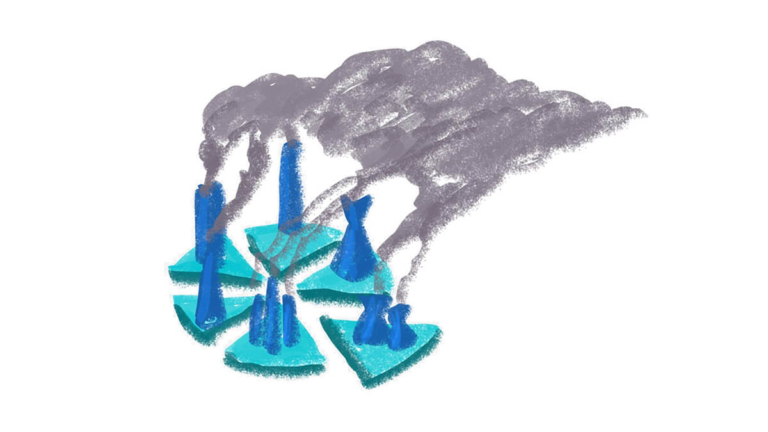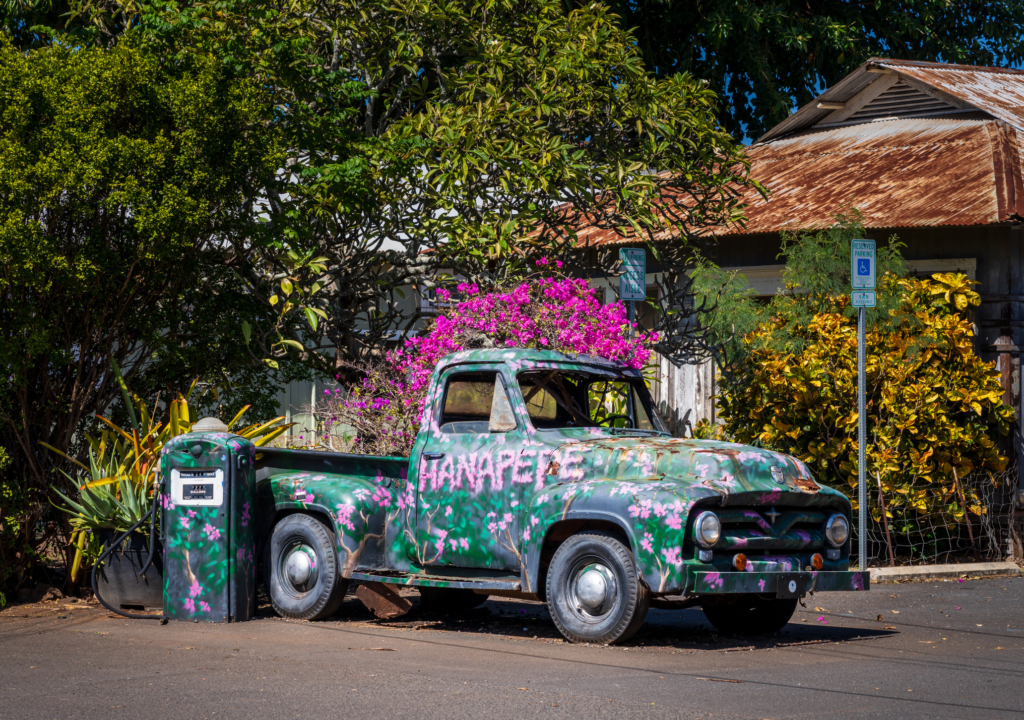Casebook Info
A group of Hawaiian children sued the state of Hawai’i to demand that the state transportation department reduce emissions from transportation. After losing a motion to dismiss, Hawai’i settled with the youth and agreed to their demands. Under the agreement, Hawai’i will take concrete, measurable steps to progressively decarbonize its transportation sector.
- Year Filed 2022
- Year of Most Recent Ruling 2023
- Year of Final Ruling 2023
- Jurisdiction Hawai'i
- Court Name Circuit Court of the First Circuit
- Primary Focus Mitigation
- Ruling On Motion to dismiss
- Plaintiff(s) 13 Hawaiian children
- Respondent(s) Hawai'i Department of Transportation
- Outcome Settled
- Organizational leader of the litigation EarthJustice and Our Children's Trust (as counsel)
- Link to the decision/ruling
Background
The U.S. state of Hawai’i is, in many ways, a leader on the issue of climate change. In 2021, the state legislature became the first in the U.S. to declare a climate emergency, joining over a thousand other governments and the European Union. The legislature also passed several laws to address said emergency. One of these laws, the Zero Emissions Target established a goal of sequestering more atmospheric carbon and greenhouse gases (GHGs) than those emitted within the state, “as quickly as practicable, but no later than 2045” (HI Rev. Stat. § 225P-5). The 2021 legislature also funded infrastructure for electric vehicles, directed a state agency to assess and plan for sea level rise, required sellers to disclose sea level rise risks when selling residential properties, provided matching funds for small businesses looking to develop sustainable aviation fuels, and authorized the governor to form a “green job youth corps,” among other changes.
Pushing for Concrete Emissions Reductions
Yet, as a group of Hawaiian children saw, these efforts did not go nearly far enough. In a complaint filed against the Hawaiian Department of Transportation (“HDOT”) in 2022, the thirteen children alleged that the Department was “not only failing to reduce greenhouse gas emissions from the state transportation system, but are, indeed, heading in the opposite direction, without any plan or prospect for meeting the Zero Emissions Target or any other meaningful climate mitigation goal” (¶4). Stressing the need for more ambitious government action, the youth plaintiffs noted that per capita GHG emissions in the state remained “higher than 85% of countries on Earth,” with the transportation sector on track to make up more than half of the state’s emissions by 2030. (¶¶3, 4). The children argued that the Department’s conduct was a clear violation of the public trust doctrine and their right to a clean and healthful environment.
To make their case against HDOT, the plaintiffs first established the importance of transportation emissions. Total emissions from the sector increased between 1990 and 2020, despite federal policies and regulations that reduced transportation emissions (¶128). Unsurprisingly, “petroleum use in the transportation sector [also] increased between1990 and 2020” (¶131). Transportation was polluting the atmosphere more than the electric power sector (¶134). Even more troublingly, a government report from 2017 found that emissions from the transportation sector would likely increase by 41% between 2020 and 2030 (¶132).
The plaintiffs then sought to establish HDOT’s responsibility for the increasing emissions from the transportation sector. The plaintiffs explained that HDOT was engaged in a “pattern and practice of promoting, funding, and implementing transportation projects that lock in and escalate the use of fossil fuels” (¶5). Rather than taking steps to meet its stated decarbonization goals, the Department continued to construct and expand highways, which has the effect of increasing car pollution (¶158). The plaintiffs noted that the Hawai’i legislature had even warned against adding highway lanes to reduce traffic, since that can incentivize more car use (¶156). The Department had also failed to expand infrastructure for electric vehicles, public transit, cycling, and walking. When planning and budgeting for projects, HDOT regularly failed to consider the walking, cycling, and public transit needs or to solicit public input from the community (¶167). The plaintiffs further alleged that HDOT had “not collaborated and coordinated with other governmental entities charged with achieving the Zero Emissions Target” (¶169).
Thus, the plaintiffs argued that HDOT was violating the public trust doctrine and their right to a clean and healthful environment. The state has an obligation under the Hawaiian constitution to conserve, protect, and hold natural resources in the public trust, for the “benefit of present and future generations” (Article XI Section 1). In the plaintiffs’ view, the state failed this obligation by maintaining and operating a transportation system that was degrading the state’s natural resources by exacerbating climate change. The youth also argued that, by similar logic, this conduct was violating their right to clean and healthful environment, “including the right to a life-sustaining climate system” (¶187).
To remedy these violations, the plaintiffs asked the court to order the state to “take concrete action steps under prescribed deadlines to conform the state transportation system with [the state’s] constitutional duties and Youth Plaintiff’s constitutional rights” (¶B.6). They also asked the court to issue a declaratory judgement affirming that the state was violating their rights and its public trust obligations.
The youth plaintiffs, many of whom are indigenous Hawai’ians, also detailed harms that they have suffered from climate change. For example, 14-year-old Navahine explained that her family has farmed kalo for ten generations, however extreme precipitation and drought threatened her ability to continue the cultural practice. (¶11). And 11-year-old Kaliko described how she and her family completely lost their home to Tropical Storm Olivia in 2018, forcing them to relocate to a new home (¶33). These experiences, along with others, helped the plaintiffs establish their interest in the case and the urgent need to reduce GHG pollution.
The Case Proceeds
The state asked the court to dismiss the case because the plaintiffs had not stated a valid claim in their complaint. The state made several arguments to support this motion:
- The right to a clean and healthful environment only covered violations of existing environmental law.
- The plaintiffs did not identify a “specific exercise of a ‘statutory function’ that HDOT failed to perform in accordance with its public trust duties” (Motion to Dismiss, p. 12)
- The public trust doctrine only applies to local issues regarding local natural resources; it does not apply in the context of climate change because the state is only responsible for a small portion of the world’s GHG pollution.
- The plaintiffs were asking the court to resolve a political question that would require it to violate separation of powers.
- The plaintiffs’ injuries were not caused by or redressable by HDOT since third parties (e.g., individual drivers) are the ones polluting the atmosphere with their fossil fuel use.
- The plaintiffs only identified a “set of abstract issues rather than an actual, ripe controversy that is suitable for judicial resolution” (p. 2). It is not possible for HDOT to have already violated a decarbonization deadline set for 2045, 20 years in the future.
The Case Proceeds
The Hawai’i trial court was unpersuaded by the state’s arguments. Noting that cases should only be dismissed when the plaintiffs could not win as a matter of law, the court rejected the state’s motion and allowed the case to proceed to trial.
The court observed that under the public trust doctrine, the state “must take steps to maintain their assets to keep them from falling into disrepair,” regardless of whether it has full control over the conduct causing harm to these natural resources (Denial of Motion to Dismiss, p. 2-3). It would undermine the effect of the public trust doctrine to relieve the government of its public trust duties simply because “GHG emissions are just ‘too big a problem’” (p. 4). The court further specified that the public trust doctrine applies irrespective of whether the government has a statutory mandate to take action. In other words, the state’s laws do not limit the government’s constitutional obligation to protect the state’s natural resources. For these reasons, the plaintiffs had pled a legally valid claim based on the public trust doctrine.
Turning to the right to a clean and healthful environment, the court noted existing environmental law already provided a basis for vindicating this right in a climate change context. The Hawai’i Supreme Court had previously recognized that the Hawai’i code defined the right to a clean and healthful environment by requiring agencies to consider GHG emissions.
As a result, the court determined that the plaintiffs had raised a ripe legal controversy over the government’s compliance with statutory directives. It found that the state legislature had not merely set aspirational emissions reduction goals with no legal force, rather it had required the government to plan and take timely action (p. 8). Thus, the dispute was over HDOT’s current violation of the state’s statutes, particularly the Zero Emissions Target, rather than its future violation of the 2045 deadline.
The court also found that the plaintiffs had alleged present and ongoing harms, not merely hypothetical or future harms. Failing to take action on GHG pollution bakes in future harms such that they cannot be avoided. The court observed that the Hawai’i Supreme Court had affirmed this very point in its landmark decision in Hawaii Electric Light Co. There, the Supreme Court had recognized that climate change poses “immediate threats” to Hawai’i, which amplify each year that governments fail to curb GHG pollution (quoting the Supreme Court, p. 9-10).
Accordingly, the court concluded that the plaintiffs did have standing to bring the case because a declaratory judgment would bring relief to the plaintiffs. The court explained:
Plaintiffs allege nothing less than that they stand to inherit a world with severe climate change and the resulting damage to our natural resources . . . Since Defendants essentially argue Hawai‘i law does not require them to take action now, it appears a declaratory judgment action will help resolve the parties’ different views of what the Legislature and the Constitution require.
p. 10
In what has become a familiar refrain in climate litigation, the court also dismissed the state’s argument based on the political question doctrine. The court noted that the plaintiffs’ claims were based on the constitution, and courts “have an important and long-recognized role in interpreting and defending constitutional guarantees” (p. 11). The plaintiffs could ask the court for injunctive relief that would trespass into the political domain, but that issue was not yet before the courts since the plaintiffs had also asked for declaratory relief.
In sum, the court concluded that the plaintiffs had alleged valid claims based on the public trust doctrine and right to a clean and healthful environment. Hawaiian law did apply the right to GHG emissions. The public trust doctrine did not require a violation of a specific statutory function, nor does it solely apply to local issues. The case did not violate the political question doctrine because courts are empowered to interpret statutes and the constitution, and issue declaratory judgments accordingly. Such a declaration would provide some redress for the plaintiffs, who alleged current and ongoing harm from the HDOT’s inaction. As a result, the court allowed the case to proceed and subsequently set a date for trial.
Hawai’i Agrees to the Youth Plaintiffs’ Demands
Following this decision, the state decided to negotiate a settlement agreement with the plaintiffs. On May 17, 2024, days before the case was set to go to trial, the court approved a sweeping settlement that requires HDOT to take concrete action on reducing GHG emissions.
The settlement starts by recognizing the youth plaintiffs’ rights. Drawing on court precedent, the settlement states that the right to a clean and healthful environment includes a right to a “life-sustaining climate system” (p. 3-4, quoting In re Maui Elec. Co.). Similarly, “the State’s public trust considerations include ‘those related to protection of air and other trust resources affected by climate change” (p. 4, quoting In re Maui Elec. Co.). HDOT must therefore “preserve, protect and maintain Hawai’i’s public trust resources and all Hawai’i citizens’ right to a clean and healthful environment” (p.4).
The agreement then sets out specific terms for HDOT to meet the Zero Emissions Target. First, the Department must “develop and implement a concrete and comprehensive statewide plan . . . to reduce GHG emissions from the statewide transportation system on a timeline that complies with [the Zero Emissions Target]” (p.5). This plan will set five year emissions reduction targets, with HDOT conducting a comprehensive review of the plan and updating it accordingly every five years (p. 6). The agreement gives HDOT one year to complete the plan, and it provides that the public will have an opportunity to provide feedback and comments on the plan.
Under the agreement, HDOT will have to consider and work to reduce the number of vehicle miles traveled and the number of single occupancy vehicles in the state. HDOT will also have to set targets to: expand “multimodal transportation options such as public transit, pedestrian pathways, and bikeways;” improve safety for pedestrians and cyclists; “electrify transportation and support expansion of the public charging infrastructure;” “reduce petroleum use from ground transportation and increase the use of zero-carbon alternative fuels and electric vehicles in the ground, air, and marine transportation sectors;” and convert equipment at airports and harbors to zero-emission technologies (p. 6). HDOT will also develop and implement a public outreach and community engagement program that will work to emphasize the public’s role in transitioning to clean transportation.
To facilitate these targets, the Department will develop a process and set of criteria for evaluating transportation projects. This will include developing and implementing a “scientifically-based methodology to assess and report the total, long-term GHG emission and [vehicle miles traveled] impacts of each infrastructure project” (p. 7). On an annual basis, the Department will publish a report that compiles individual projects and details the Department’s progress and it will also make impact assessments, reports, and project evaluations publicly available. Notably, “HDOT will include consideration of equity goals for each project at the planning stage” and an assessment of whether the project serves these equity goals (p. 8).
The agreement also provides that HDOT will create a lead unit responsible for coordinating HDOT’s mitigation efforts and several positions to oversee these efforts. The unit, led by the Climate Change Mitigation and Culture Manager, will work across the agency to see that its mitigation goals are being met. Similarly, the Department will create a position for overseeing mitigation efforts in the Highways unit, and a position to lead the effort to increase pedestrian and cyclist safety and access. HDOT will also “establish a youth volunteer council to advise on HDOT’s mitigation and adaptation commitments on a quarterly basis, with transparency about youth council recommendations and HDOT’s responses” (p. 9).
The settlement concludes with several immediate commitments from HDOT. The Department will “undertake an ambitious mobilization” to expand electric vehicle infrastructure and county vehicles by 2030 (p. 9). Similarly, HDOT will “undertake an ambitious mobilization . . . to complete the pedestrian, bicycle, and [public] transit networks” (p. 9). HDOT will also increase efforts to plant non-invasive, and where possible native, trees and shrubs. More broadly, HDOT will act on “immediate opportunities” to advance the mitigation goals set out in the agreement (p. 9).
- ~59% of CO2 emissions in Hawai’i came from transportation, in 2018 (Complaint, ¶130)
- 31 The average number of vehicle miles added each year in Hawai’i due to new vehicle lanes (Complaint, ¶160)
- 13 million metric tonnes of CO2 equivalent were contributed to the atmosphere by new vehicle lanes in Hawai’i between 1991 and 2017 (Complaint, ¶161)
- 0 The net carbon emissions output that Hawai’i must achieve in the next 15 years
Strategies
Affirming country / corporate responsibility for their ‘fair share’ of emission reductions, regardless of the actions of other countries or corporations.

In denying the state’s motion to dismiss, the court held that Hawai’i has a constitutional obligation to do its part to protect the state’s natural resources by reducing GHG emissions. The court reasoned that the public trust doctrine requires Hawai’i to do what it can to take care of its natural resources, even though it cannot fully prevent the pollution that is degrading those resources.
Focusing on youth and future generations

The youth plaintiffs’ case rested on the rights of youth and future generations to a stable, life-sustaining climate system. Their claims depended on the fact that they will suffer the repercussions of Hawai’i’s current emissions. They alleged that the state was not protecting and conserving the state’s natural resources for youth and future generations, and that the state’s actions were impairing their right to live in a clean and healthful environment in the future. To make these arguments, it was crucial that the plaintiffs were young, and thus likely to live through the impacts of current emissions.
Emphasizing the urgency of taking climate action now, given the compounding and permanent effects of climate change as time progresses

The court and plaintiffs emphasized that current emissions will ‘bake in’ adverse climate change impacts for decades to come. Thus, the plaintiffs’ claim was not merely based on the abstract risk of future harm. Rather, it was based on the concrete and certain harm that current emissions are causing. These emissions cause latent harm: people and nature may not suffer injuries from the harm for years to come, but the harm has already been done.
Impacts
The settlement agreement requires Hawai’i to take concrete action, measurable action on mitigating GHG pollution from its transportation sector. It also allows the public to have a meaningful role in overseeing this action by requiring the state to be transparent about its activities and solicit public feedback. The agreement also gives plaintiffs a tool for compelling future action if the government fails to take sufficiently ambitious action. The court will “retain jurisdiction to enforce the agreement for the next 21 years until its terms have been achieved.”
More broadly, the case may have an influence beyond Hawai’i’s borders. The settlement provides a model an “exemplary and replicable model for decarbonizing transportation systems around the U.S., and the world.” The plaintiffs’ case also provides a model for how the right to a healthy environment and the public trust doctrine can be successfully used in climate litigation. And lastly, the case both symbolically and concretely empowers young people to demand a cleaner future. The young plaintiffs will likely inspire other young people to take action in their own ways, and the agreement itself provides for a youth volunteer council. This council will empower its participants, and other young people, to see themselves as part of the effort to address climate change.
